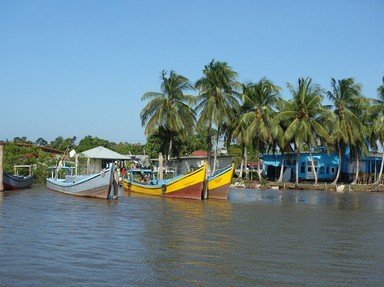Quiz Answer Key and Fun Facts
1. The Independent Republic of Suriname had a name change on November 25, 1975. Reflecting its colonial background, what was its name before this change?
2. The Amazon basin just touches the southern edge of Suriname. From the peaks of the granite Mount Kasikasima, you'd get a stunning view over the 'what' of the Amazon forest?
3. Suriname, in common with parts of the South Eastern United States, has languages that reflect the mixed heritage of its speakers, such as the Saramaccan people. Over time they incorporated speech elements of the Portuguese, Jewish and English people in the area to come up with their special patois. By what generic name is such a language known?
4. All Suriname's eight species of what can be found at the Raleighfalls, located on the spectacular Coppename River?
5. The Suriname, Corantijn, and Marowijne are rivers that drain the rain forests of the Amazon Basin into what ocean?
6. Located on the Nickerie river, the Blanche-Marie waterfalls were discovered by Lieutenant Van Drimmelen in 1897. For whom did he name them?
7. Created by the construction of the Afobaka Dam, the largest lake in Suriname is the Brokopondo Reservoir, a man-made lake whose main purpose is what?
8. One of the first illustrated accounts of the natural history of Suriname was by Maria Merian, a German woman whose passion for accuracy meant she was what?
9. The climate of Suriname lends itself to the production of crops such as sugar. In a foregone era, hundreds of plantations existed along what was known as the Sugar ____?
10. Having the appearance of a single piece of rock, the Voltzberg is a monolith in what World Heritage listed area?
Source: Author
VegemiteKid
This quiz was reviewed by FunTrivia editor
spanishliz before going online.
Any errors found in FunTrivia content are routinely corrected through our feedback system.
